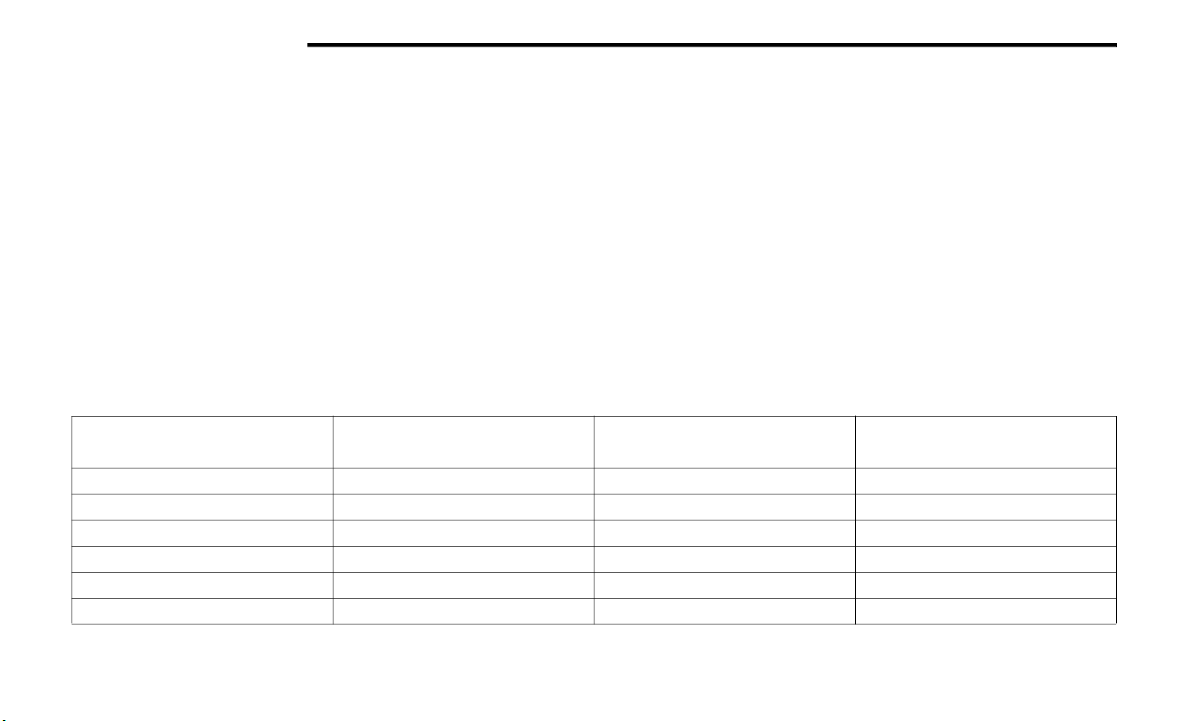Loading ...
Loading ...
Loading ...

116 STARTING AND OPERATING
1. With the transmission in PARK, the parking
brake applied, and the engine running, turn
on the Cruise Control, then push the SET (-)
button.
2. The engine RPM will go up to 1,100 RPM. To
increase the RPM, push and hold the RES (+)
button and the idle speed will increase to
approximately 1,500 RPM. To decrease the
RPM, push and hold the SET (-) button and the
idle speed will decrease to approximately
1,100 RPM.
3. To cancel the Idle–Up feature, either push the
CANCEL button, push the ON/OFF button, or
press the brake pedal.
NOISE
Diesel engines can create noises that may seem
as a concern. The nature of a diesel engine is
compression ignition where compressed air and
fuel are mixed and ignited. Weather, barometric
pressure, altitude and temperature will affect how
fuel is ignited in the engine. Engines will sound
different from day to day or previous model years.
Clicking, ticking, or light knocking is normal and will
change from day to day, as the engine breaks in,
and can vary with changes in ambient
temperature; this is normal. Diesel equipped
vehicles also have an exhaust after treatment
system to reduce emissions utilizing a Diesel
Particulate Filter (DPF) and a Selective Reduction
Catalyst (SCR). The SCR reduces Nox using the
Diesel Exhaust Fluid (DEF) system. DEF is injected
directly into the SCR through an dosing module.
This process will create a clicking sound and at
times, will make noise even with the vehicle shut
off. This is normal as the DEF dosing module is
purging DEF. If at any time the check engine light is
on, please visit an authorized dealer.
STOPPING THE ENGINE
Idle the engine a few minutes before routine
shutdown. After full load operation, idle the engine
three to five minutes before shutting it down. This
idle period will allow the lubricating oil and coolant
to carry excess heat away from the combustion
chamber, bearings, internal components, and
turbocharger. This is especially important for
turbocharged, charge air-cooled engines. Refer to
the following chart for proper engine shutdown:
Driving Condition Load Turbocharger Temperature
Idle Time (min.) Before Engine
Shutdown
Stop and Go Empty Cool Less than One
Stop and Go Medium - One
Highway Speeds Medium Warm Two
City Traffic Maximum GCWR - Three
Highway Speeds Maximum GCWR - Four
Uphill Grade Maximum GCWR Hot Five
22_DPF_OM_EN_USC_t.book Page 116
Loading ...
Loading ...
Loading ...
